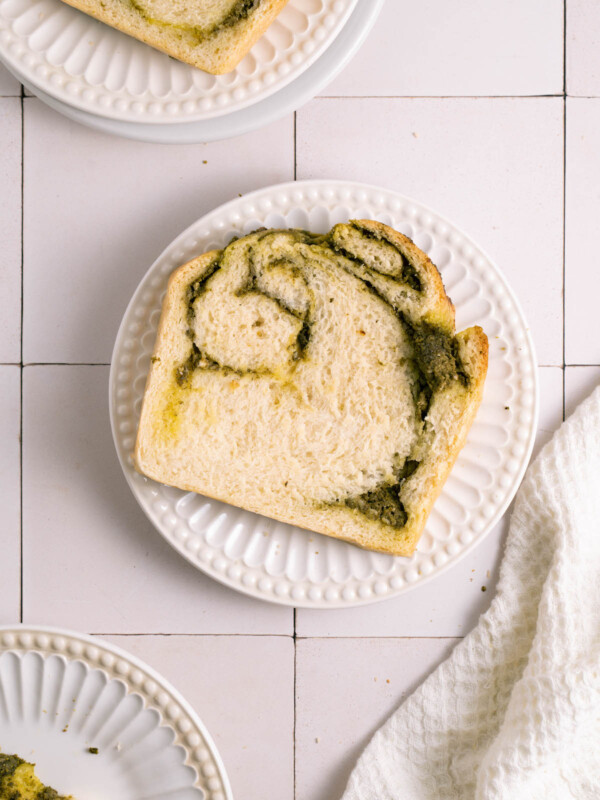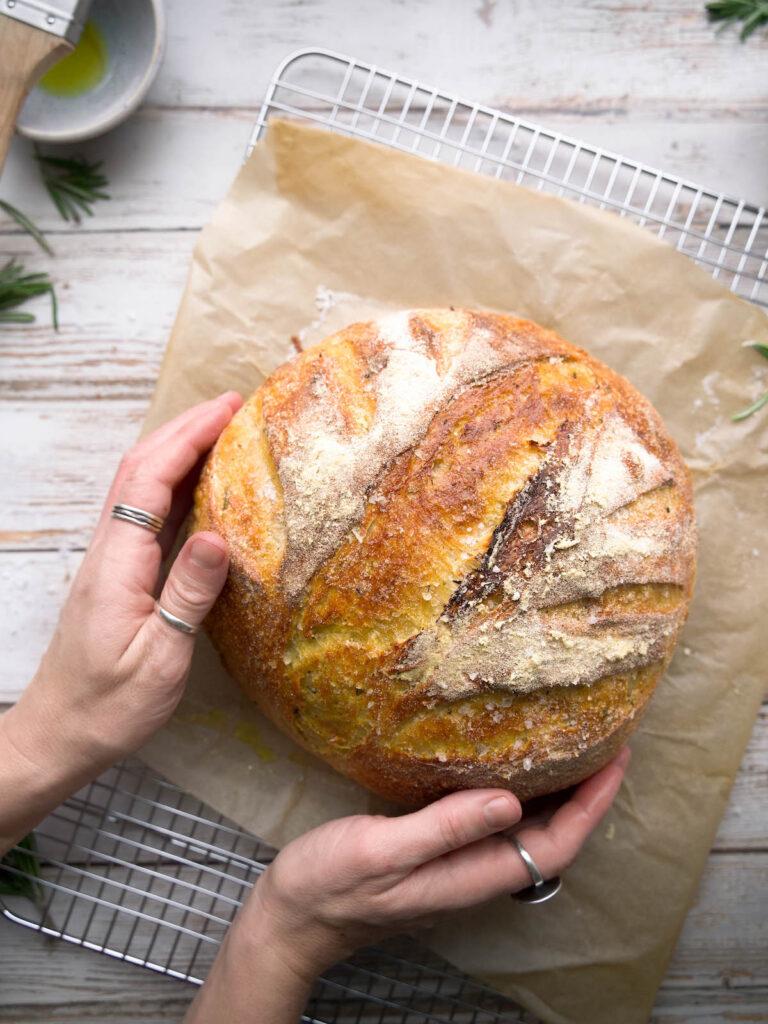
This is my very favorite bread of all time, with fresh rosemary, crunchy sea salt flakes, and that beautiful sourdough flavor and texture. That’s all the things I want in a loaf of bread.
Why you’ll love this bread
It’s herby. It’s salty. It’s brushed all over with olive oil. The crust has a perfect crunch and the interior has a perfect chew. The sourdough gives it a tangy flavor, and the rosemary and olive oil make it feel fresh and bright.
If that’s not enough to get your butt in the kitchen, I’ve got another important selling point – it’s super simple to make. It’s similar to my Garlic Herb Sourdough, but even easier to make. I’m talking no machines and no kneading necessary. Just throw everything together and stretch the dough every once in a while. The bread will take care of the rest.
How to make rosemary sea salt sourdough
Make the dough the day before you want to bake the bread. On day one, we’ll mix the dough, then let it sit overnight. On day two, we’ll bake!
We’ll start by making a rosemary salt. Chop up some fresh rosemary and mix it with a blend of both fine and coarse sea salt.
Next, whisk together your sourdough starter, water, olive oil, and the rosemary salt you just made. Then, add your flour and fold the mixture into a rough, shaggy ball. Cover this dough with plastic wrap or a damp towel and let rest for 45 minutes to an hour.
Over the next few hours, you’ll give the dough a stretch & fold about every 45 minutes or so. You really don’t need to be exact about the amount of time in between, just be sure to stretch your dough a total of four times.
Stretching & folding
To stretch the dough, pull the dough from one side and give it a nice long stretch, then fold it back to the middle. Turn the bowl a quarter turn, stretch again and fold back to the middle. Repeat on all four sides, cover the dough back up, and allow it to rest again until the next stretch & fold.
Once you’ve completed all the stretches, put the covered dough in the refrigerator and allow it to sit overnight. It will rise and expand a bit as it rests.
Shape & bake the bread the next day
The next morning, pull your dough out of the fridge and allow it to warm up just a little. Then, line a large bowl with a tea towel and dust it lightly with flour. Shape your dough into a ball, pinching the bottom together to create a seam. Place dough, seam side up, into the towel-lined bowl. Cover it with a kitchen towel or plastic wrap
Now, sit back and relax for a bit while your sourdough proofs. It may take anywhere between two and four hours, depending on how active your sourdough starter is and how warm your house is. Mine usually takes about four hours to rise. It should double in volume and look puffy.
Once your sourdough is proofed, preheat your oven to 450° F and let it get hot, hot, hot. Then carefully tip your dough out of the bowl and onto a piece of parchment, seam side down. Score the dough with a bread lame or very sharp knife.
Lift the parchment paper with your sourdough and lower it into the dutch oven. Cut away any excess parchment paper, put the lid on, and bake covered for 25 minutes.
Then, remove the lid from the dutch oven and continue to bake uncovered for another 18-25 minutes, or until bread is golden and cooked through. The best way to tell if bread is done is to take its temperature with an instant-read thermometer. The internal temperature should be about 205 – 215° F.
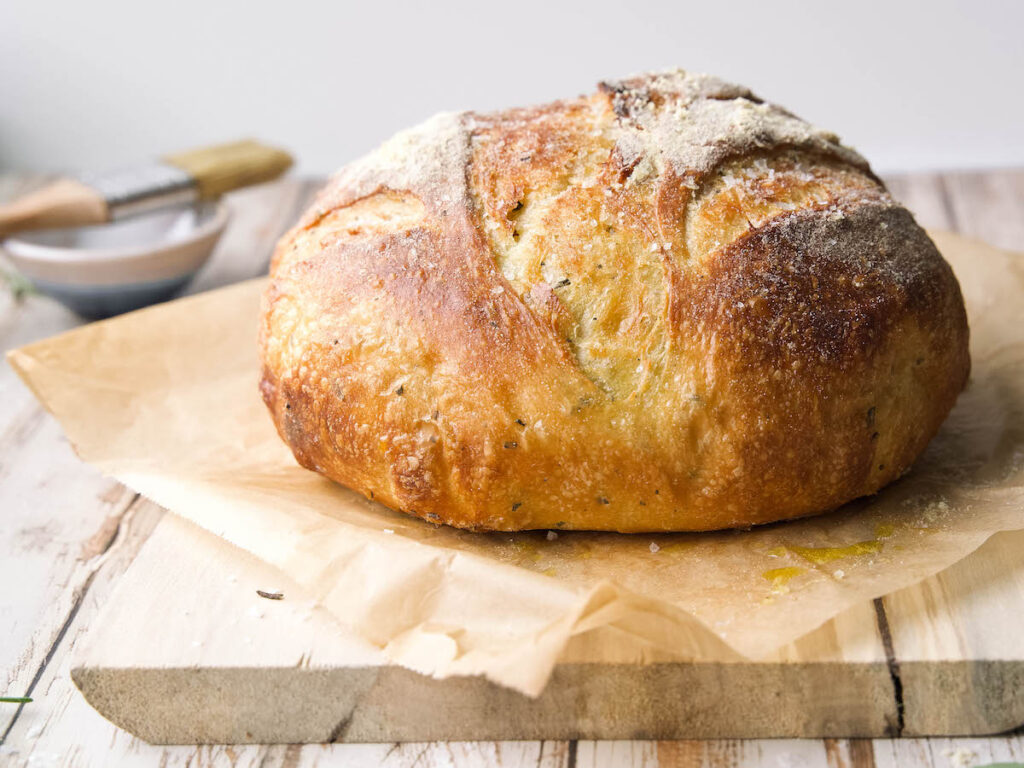
After your bread has cooled for a few minutes, brush it liberally with more high-quality olive oil and sprinkle all over with coarse sea salt. Tada! Delicious rosemary sea salt sourdough, baked from scratch!
Sourdough tips
There are a few tips to keep in mind in order to make the best sourdough possible.
Know when your dough is done proofing. If in doubt, use the “finder dent test”. Once your dough has rested the appropriate amount of time (a few hours for this recipe), gently press a floured fingertip into the dough. Properly proofed dough will spring back slightly but still maintain somewhat of a dent. Dough that isn’t ready yet will spring back immediately, and dough that is over proofed will never fill back in.
Score your bread. Scoring bread isn’t just about making a pretty pattern – it’s an important step. Scoring sourdough allows it to expand properly in the oven. Without scoring, the crust can trap steam, causing the bread to burst unpredictably. The cuts control how the bread opens up, creating a better shape and texture while also making it look beautiful! Use a bread lame or a very sharp knife for this.
Use an instant-read thermometer. It’s not always easy to tell when your bread is fully baked, but using a thermometer ensures it’s done perfectly. Aim to get your bread out of the oven when its internal temperature is between 205° and 215° F.
Don’t slice the bread too soon. I know it’s tempting to immediately tear into your freshly baked sourdough, but practice patience here. If you slice into it too early, you could end up with a gummy texture! The bread should rest for at least an hour before you slice it.
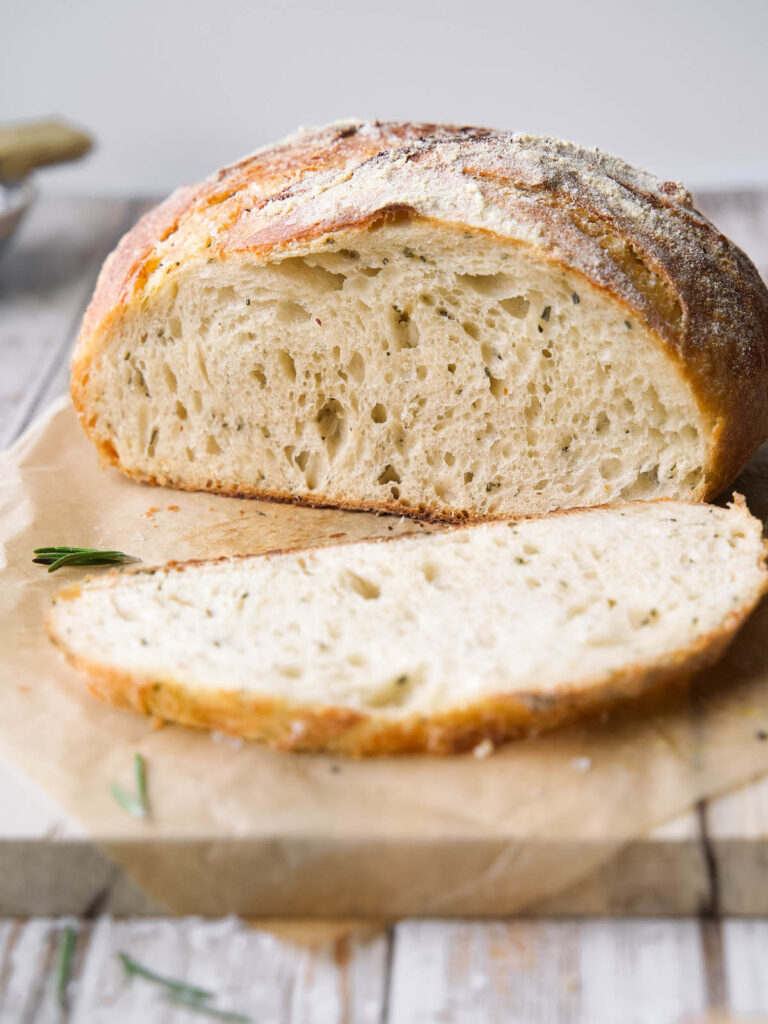
Variations
I personally think rosemary sea salt sourdough is the best bread ever, but you could mix it up a bit if you wish. This bread would also be amazing with some fresh thyme in place of some of the rosemary, or with a handful of fresh parmesan or kalamata olives added in!
Serving suggestions
You very well may just eat this whole loaf of bread on its own, toasted with big slabs of salted butter or dipped into olive oil. And that would be totally fine. However, rosemary sourdough definitely takes avocado toast to the next level. It’s also great for dipping in soups, making sandwiches, and mopping up pasta sauce.
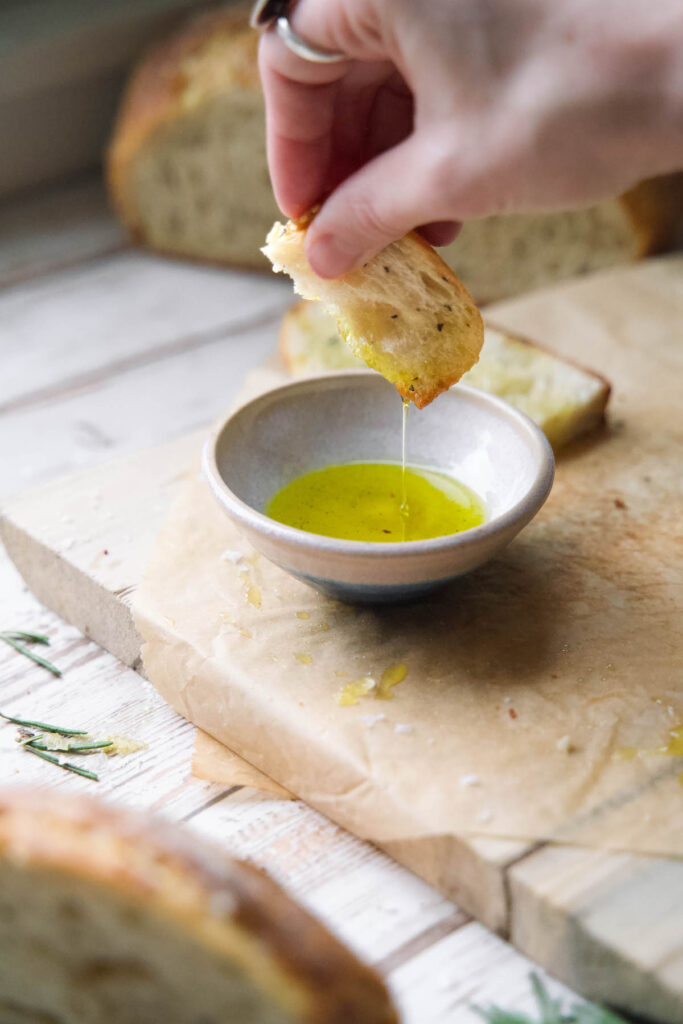

Rosemary Sea Salt Sourdough
Equipment
- Dutch oven with lid
Ingredients
- 150 grams active, bubbly sourdough starter
- 310 grams warm water
- 25 grams high-quality olive oil
- 8 grams fine sea salt
- 3 grams Maldon flakes or other high-quality coarse sea salt
- 2 tablespoons fresh rosemary, chopped fine
- 500 grams bread flour
- Extra olive oil and coarse sea salt, for after baking
Instructions
To make the rosemary sea salt sourdough:
- Mix chopped rosemary with fine & coarse sea salt. Combine sourdough starter, water, olive oil, and rosemary salt. Whisk to combine.
- Stir flour into starter mixture.
- Finish mixing by hand, folding mixture until it forms a rough ball. Cover with plastic wrap or a damp towel and let rest 45-60 minutes.
- Over the next few hours, give the dough a stretch & fold about every 45 minutes or so. Plan to stretch & fold four total times.To stretch the dough, pull dough from one side and give it a long stretch, folding the dough back to the middle. Turn the bowl a quarter turn, stretch again and fold back to the middle. Repeat on all four sides, cover dough back up, and allow to rest again until the next stretch & fold.
- Once you've completed all the stretches, put the dough in the refrigerator and allow it to sit overnight.
The next day:
- The next morning, pull your dough out of the fridge and allow it to warm up a bit.
- Line a large bowl with a tea towel and dust it lightly with flour. Shape your dough into a ball, pinching the bottom together to create a seam. Place dough, seam side up, into the towel-lined bowl.
- Cover with a kitchen towel or plastic wrap. Allow dough to rest and rise for about 2-4 hours, or until puffy and doubled (the time will vary quite a bit depending on your dough and the temperature in your house).
- Place a dutch oven with lid in the oven and preheat oven to 450° F. When oven comes to temperature, carefully turn your dough onto a piece of parchment, seam side down. Score the dough with a bread lame or very sharp knife in any desired pattern.
- Lift the parchment paper with your sourdough and lower it into the hot dutch oven. Cut away any excess parchment paper, put the lid back on, and bake covered for 25 minutes.
- Remove lid from dutch oven and continue to bake uncovered for another 18-25 minutes, or until bread is golden and cooked through. The best way to tell if bread is done is to take its temperature with an instant-read thermometer – it should be about 205 – 215° F.
- Remove from oven and gently lift bread out of dutch oven, using the parchment paper as handles. Allow to cool for 5-10 minutes, then brush liberally with more high-quality olive oil and sprinkle all over with coarse sea salt.
- Allow the sourdough loaf to cool completely before slicing – if you slice into it too early, you could end up with a gummy texture! It should rest for at least an hour before you slice it.
Did you try this recipe?
Be sure to leave a comment below!